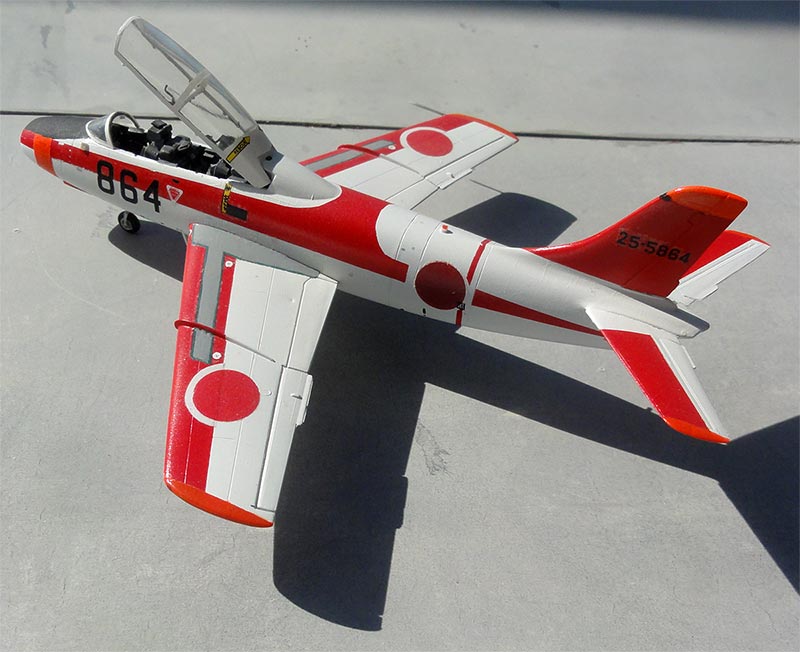JASDF
Japanese trainers in 1/72 scale
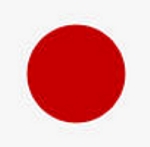
On behalf of the Japan Air Self Defence Force after World War 2, several aircraft were developed for training purposes. In 1/72 scale, some of these Hasegawa kits are:
- Fuji T-1
- Kawasaki T-4
- Fuji T-3
- Lockheed T-33 "T-bird"
Fuji T-1
The Fuji T-1,
which first flew in January 1958, was developed as a trainer in Japan.
It's layout has clear resemblance with the North American Sabre with nose
air intake and swept wings. The jet engine was based on the Bristol Orpheus.
The T-1 is a tandem seat trainer with a upwards opening canopy. ..
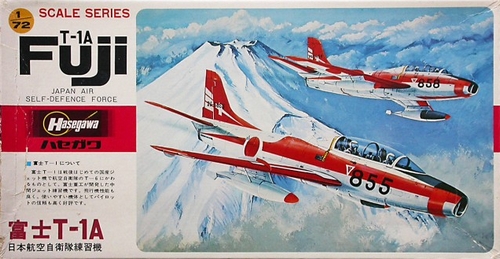
The 1/72 Hasegawa kit No. JS-58 is one of the older Hasegawa kits from the 1960s. It is a simple model with about 40 parts.
Assembly can be done straight forward,
but improvements can be made as follows:
- re-scribe some of the panellines
as this will improve the look
- add a cockpit interior with some
new instrument panels and some new seats; these can be obtained from a
commercial set or made from plastic card ; it is rewarding to put in some
effort here as it can be readily seen.
- open up the nose air intake ;
- drill open the holes in the lower airbrake #15
- add a small air intake scoop slightly below the left windscreen
- add the small right wing leading edge pitot tube
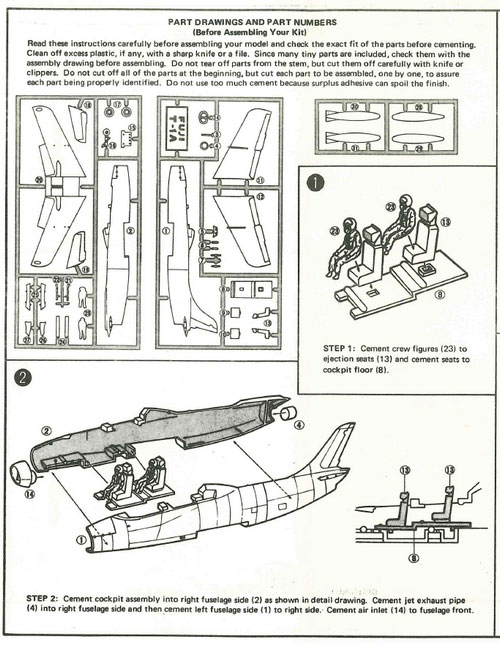
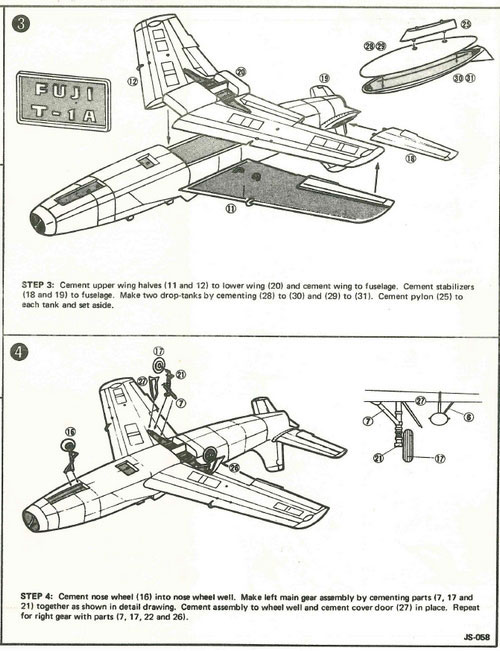
Do not forget to put enough nose weight, otherwise your model will not stand on its nose gear !
Used were some coats of varying grey on the interior and the droptanks can be seen with each a inner darkgreen anti-glare panel.
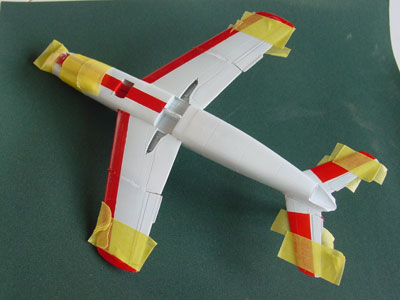 ..
..
 ..
..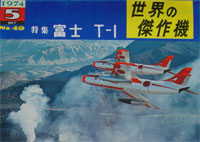
drawing
from Bunrin Do book (May 1974)
Leave of the pylons and underwing tanks until you finished adding these markings on the lower wings.
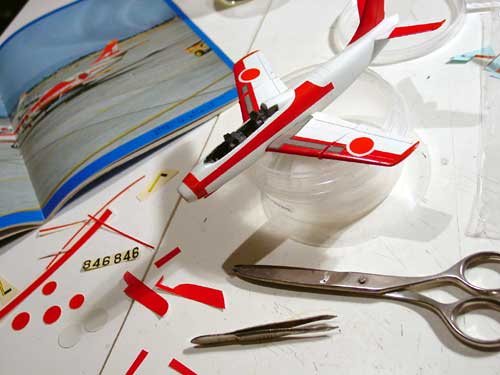
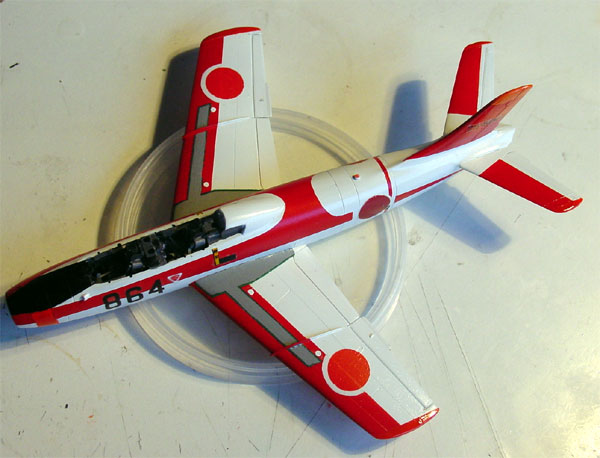
Next, assembly of landing gear was not a problem.
And here the model is....

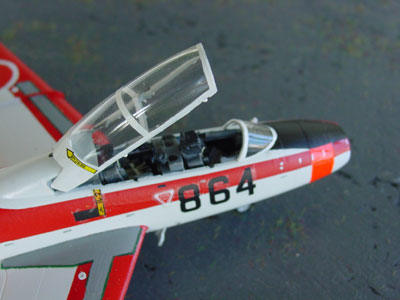

Finally, the end result is striking
with a nice result for such an old kit. A model you don't see actually
built that often.

..

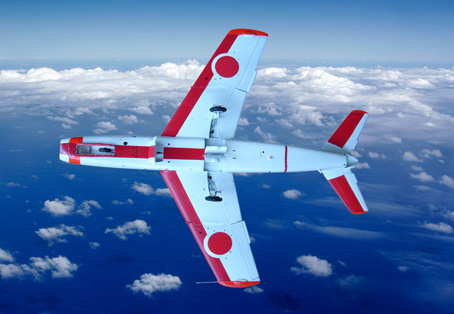
..
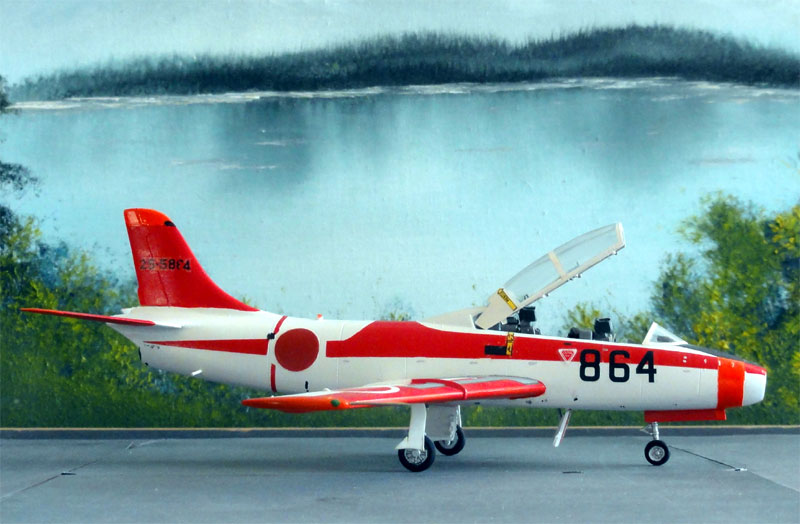
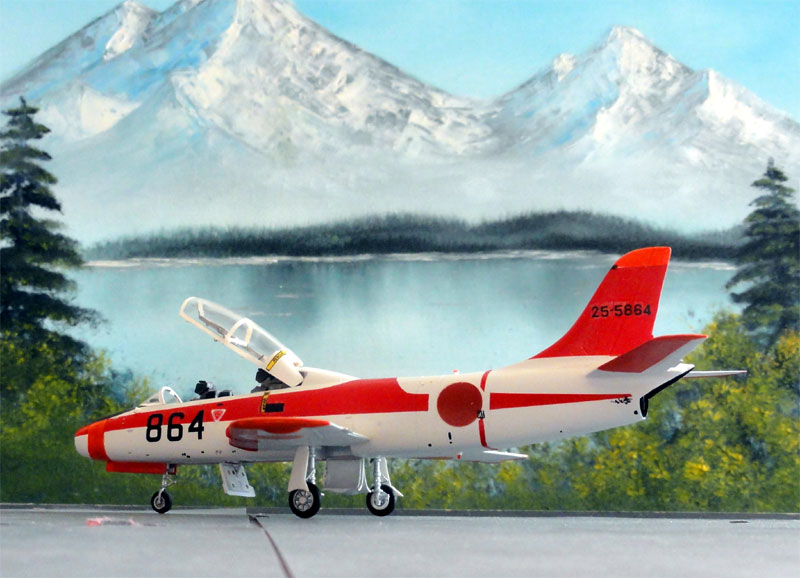
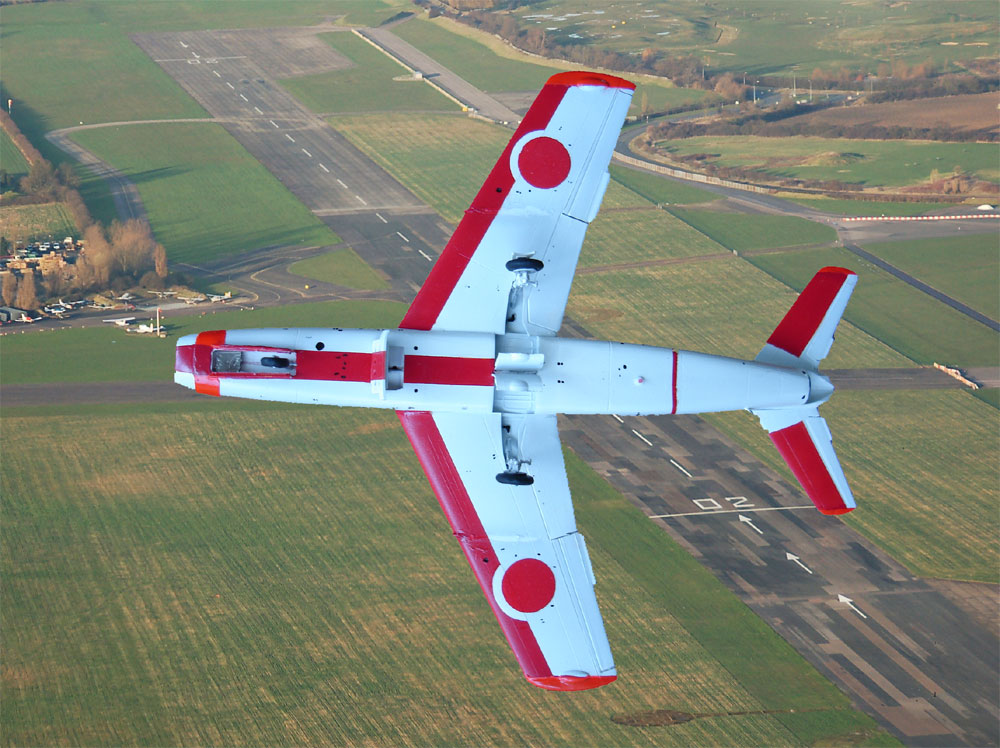

Kawasaki T-4 jet trainer
The T-4 was developed a a successor the the Lockheed T-33 and the Fuji T-1. It first flew in 1985 and was entirely developed in Japan. The plane has layout characteristics typically of other trainers like the European Alphajet.
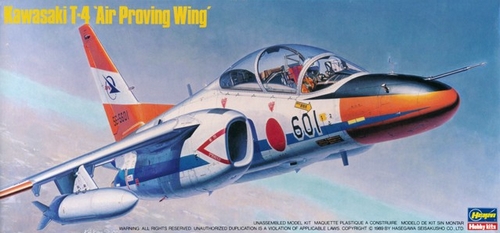
The 1/72 Hasegawa kit no. 1006 from 1989 has about 60 parts in the usual Hasegawa style.
NOTE: many years later in 1996 Hasegawa came with a brand new T-4 kit in 1/72 which is far better!
Kit presented here is the old kit.
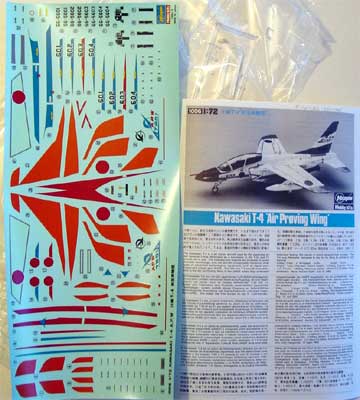 ..
..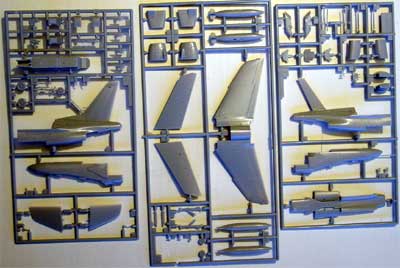
One of things that was strange was
the bad fit of this kit, not typical for Hasegawa. The air intakes and
lower fuselage and wing-fuselage joint needs a lot of filler and clean
up work.
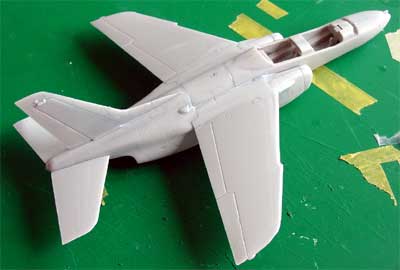
Other suggestions for improvement:
- add a glass panel within the right
hinged canopy between the forward and aft pilot tubs.
- add some detailing in the cockpit,
especially on the flat instrument side consoles
- take care when fitting the main
wheels; I had the problem to glue and fix them in the right angles.
After basic assembly and filling,
add a white base coat. Start with a matt coat, than airbrush on a gloss
coat.
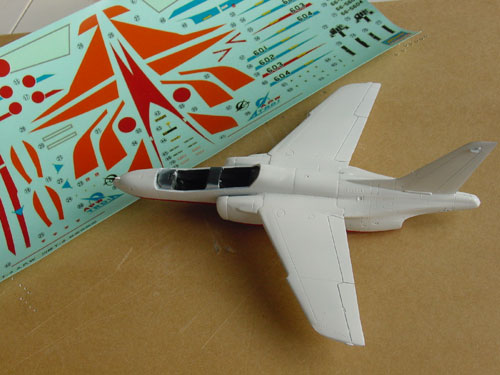
I did not add any underwing stores, prefering a clean plane. If you want, fit them only after you finished the paint scheme.
Unfortunately the decals tend to break
up in water as they are very thin and weak. I recommend putting on a coat
of Microscale Liquid Decalfilm before
you start decalling.
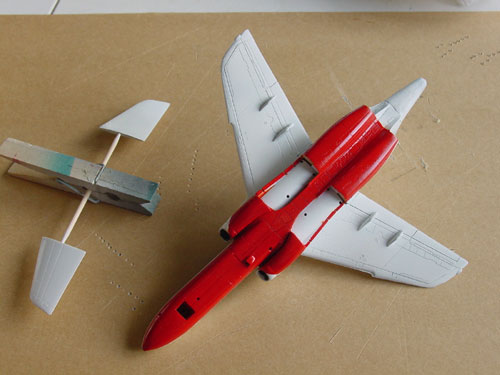
Finishing: this kit provides the
option to quite some nice looking schemes. Carefully select which one you
want to make as it needs carefull planning for painting. I made the T-4
option no. 4.
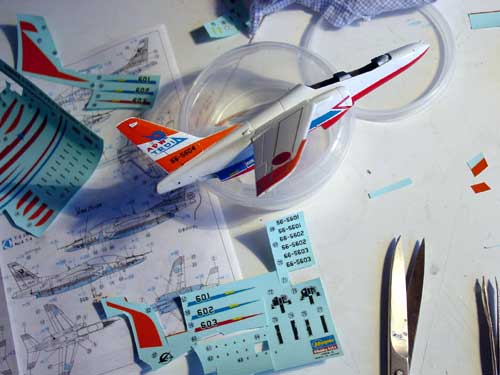
Walkway stripes were a bit of a headache
as still they tend to break up.
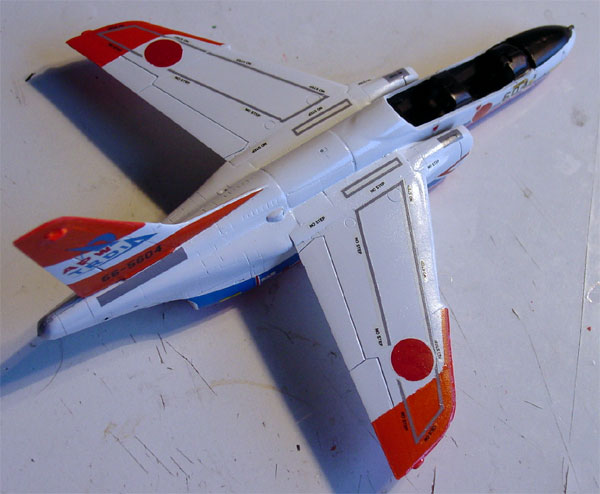
Although the decals merely cover
every panel, some painting is required. But when you carefully look, you
can avoid this by cutting up some of the left over decals from the provided
sheet. For example this can be done for the vertical tail surfaces.
However, at the wing edges, you still
need to paint as the decals do not 100% match the shapes. I tried to match
the decal colour as much as possible by mixing different paints of orange.
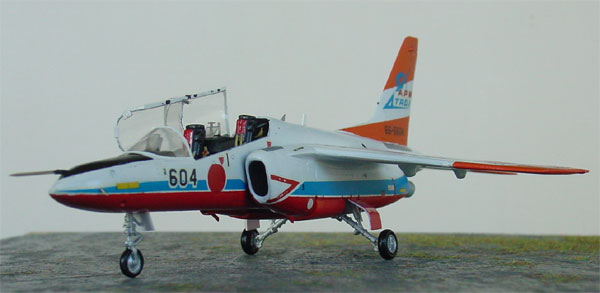
Almost ready with still to be done:
adding a decal protecting gloss coat of Johnson
Future and matting the tyres.
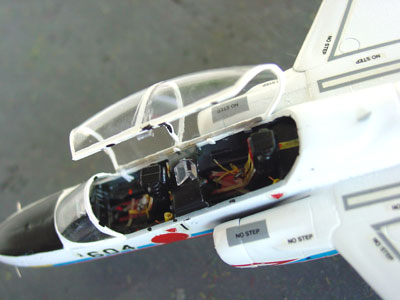
Cockpit: seat straps were made from tape in various colours
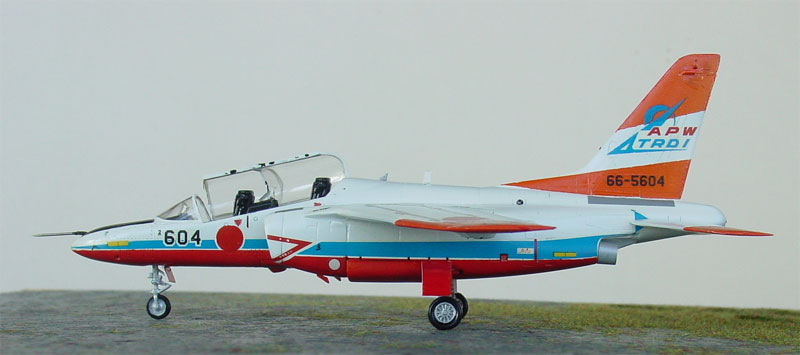
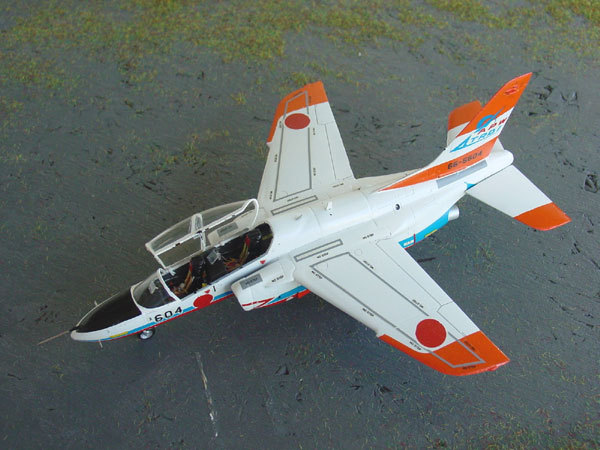
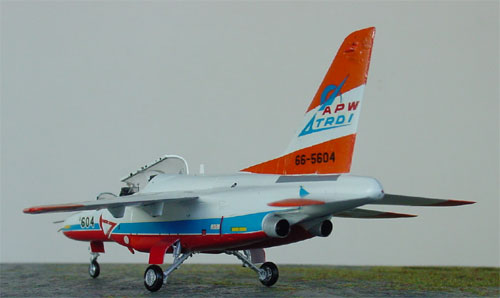
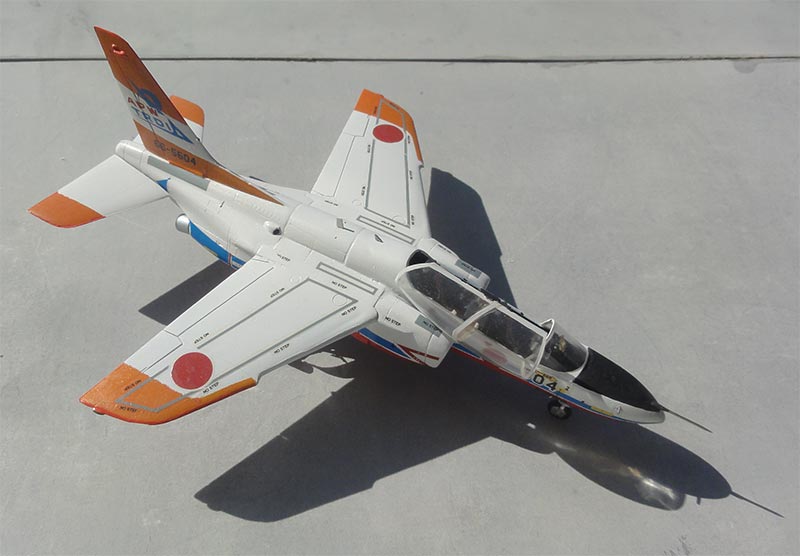
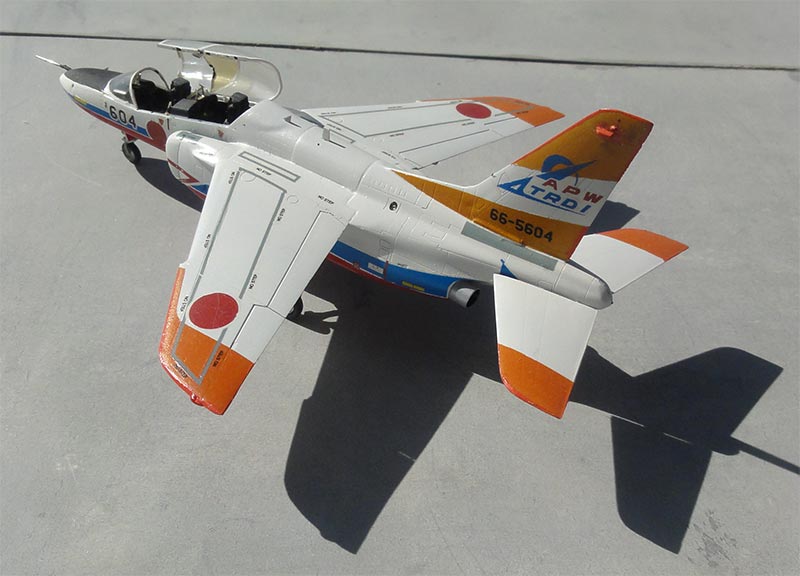
It takes quite some work , but the
end result is a very colourfull model in the collection.

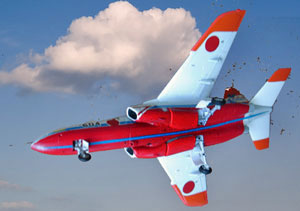
NOTE: Many years later Hasegawa came with a brand new T-4 kit with new moulds. A few kits were purchased, to be made in the future.
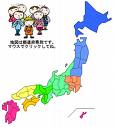 .
.
Fuji T-3 / KM-2
The next Japanese post war prop trainer aircraft shown here was derived from the Beech Mentor. It was made by Fuji as the T-3. (later it was adapted to become the KM-2)
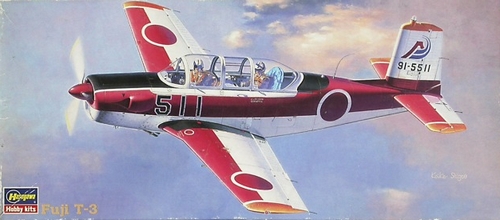
It was a primary trainer with a propeller. The kit is from Hasegawa and is quite old, from the 1970s.
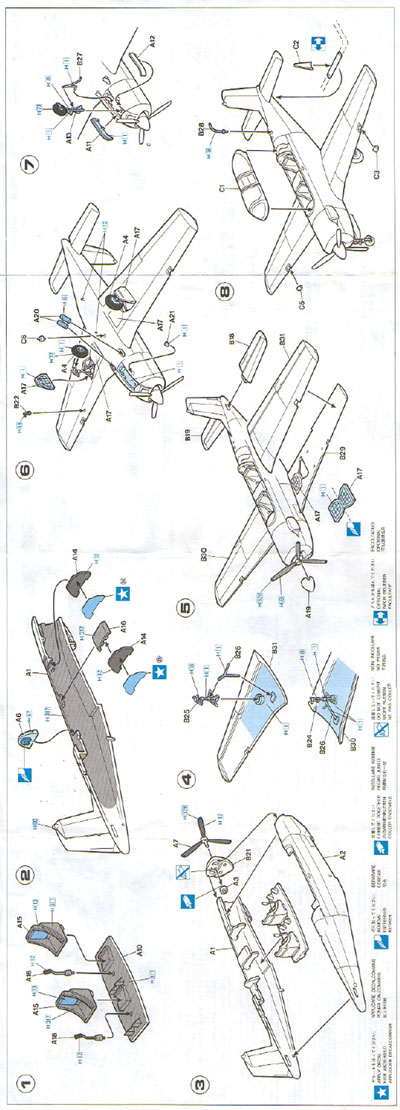
The kit was made almost straight out of the box but with some extra detailling in the cockpit. Added were instrument panels, seat straps, controls.
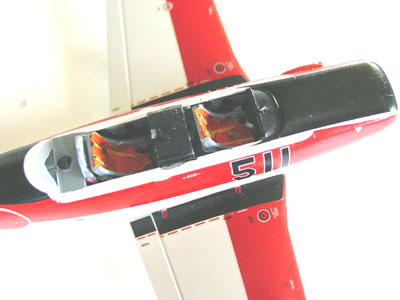


.
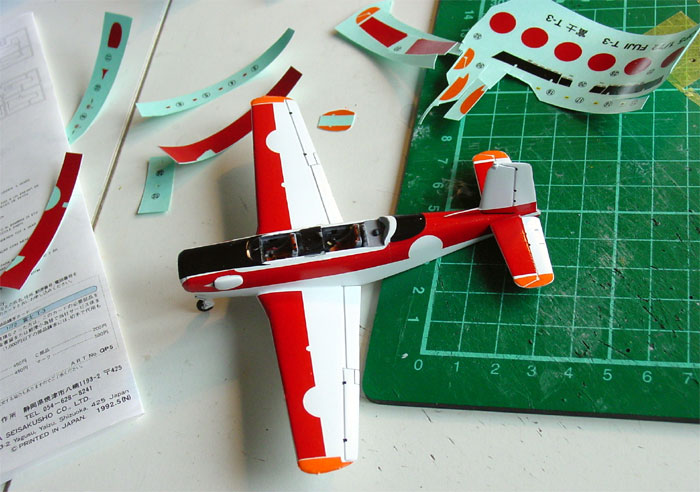
The colour scheme was made from spare
decals and by masking and spraying. The colours are as usual very bright.
(note: this kit was also issued with different decals by Hasegawa; my kit
used a very old release).
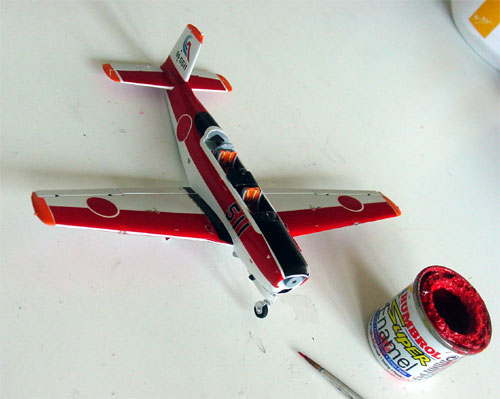
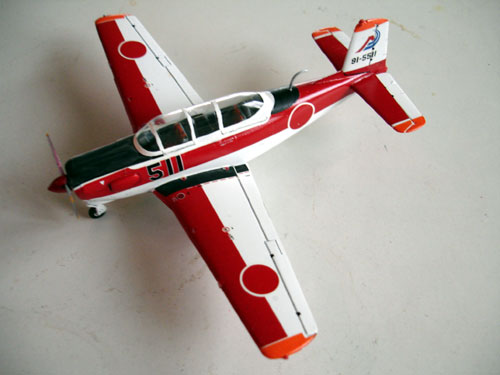
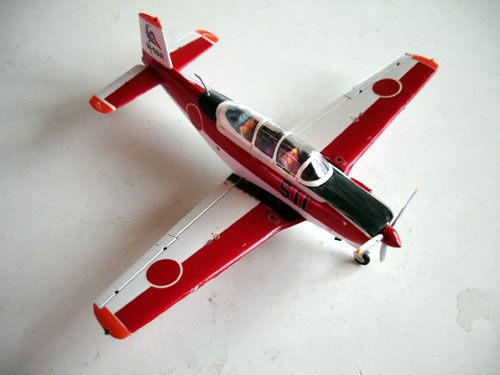
A nice little neat model of this T-3
primary trainer
References
- T-1: BUNRIN DO, Famous aircraft of the World series # 49 ( May 5-1974), Japan
- T-4: Air International magazine, Volume 30, page 102
- Wings Mook, 50 aniversary of JASDF, ISBN 4-87149-627-9, Japan

(c) Copyright Meindert "designer"/ All rights reserved. Your comments are welcomed by webmaster
Created this page January 26, 2006
